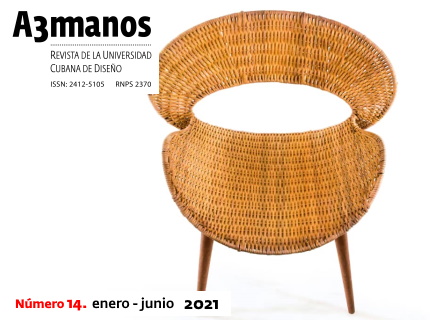The photographic transformation in the face of the convulsed was postmodern.
##plugins.themes.bootstrap3.article.main##
Abstract
This research aims to expose, from a postmodernist perspective, the way in which photography has positioned itself in various areas of human knowledge. In this course, photography has gone from a scientific proposal to a subjective experience, in which it has been transformed into a simulacrum image that expands its territory of action to all media. This mode of integration marks its incorporation and permanence in the 21st century on a more humane basis.
From a historical perspective, the existence of photography, in its almost 200 years, has not been easy at all, but, on the contrary, it has been linked to controversies about its origin and nature. And it is perhaps for 23 years (1996), that photography has added a change in its perspective; it has become broader, the production and reproduction systems of the photographic image have been transformed: we are referring to digital photography and its association with new technologies. These changes have once again convulsed the order and consolidation that photography had acquired until the emergence of the digital age.
As stated by Martin Lister (1995: 14), the photographic image in some of its variants –still image, cinematographic image and television photography– has been transformed into a wide field of ideas and speculations in which “ideas about a post-photographic era, a technological revolution and the appearance of hypermedia” are proposed. In this sense, there is no trace of originality in the "original" photograph and everything is the product of a combination of mechanization of production with the disappearance of the "author" in the post photographic image.
##plugins.themes.bootstrap3.article.details##

This work is licensed under a Creative Commons Attribution-NonCommercial-ShareAlike 4.0 International License.
- Attribution — You must give appropriate credit , provide a link to the license, and indicate if changes were made . You may do so in any reasonable manner, but not in any way that suggests the licensor endorses you or your use.
- NonCommercial — You may not use the material for commercial purposes .
- No additional restrictions — You may not apply legal terms or technological measures that legally restrict others from doing anything the license permits.
- ShareAlike — If you remix, transform, or build upon the material, you must distribute your contribution under the same license as the original. NOTE: This point applies to numbers 1 to 20 of the magazine with the previous CC-BY-NC-SA 4.0 license. Does not apply to the new CC BY-NC 4.0 license from Volume 11, Number. 21 (2024).
References
Alberich, J. (2003) Comunicación audiovisual digital, nuevos medios, nuevas formas. Barcelona, España: Universidad Obrera de Catalunya.
Frederich, J. (1997) Ensayos sobre el posmodernismo. 1ª edición. Argentina: Imago Mundi.
Lyotard, J-F. (1992) La condición posmoderna. Barcelona, España: Planeta-Agostini.
Mitchel, W. (1992) The Reconfigured Eye: Visual Truth in the Post-Photograpyc Era. Cambridge, Massachussets: MIT Press.
Ribalta, J. (2004). Efecto real. Debates posmodernos sobre fotografía. Barcelona, España: Gustavo
Gili.
Ribalta, Jorge. Lister. Martin. (1995). La imagen fotográfica en la cultura digital. Barcelona, España: Paidós Multimedia.
Ribalta, Jorge. Sekula. A. (2004). Desmantelar la modernidad, reinventar el documental. En efecto real, debates posmodernos sobre fotografía. Barcelona. España: Gustavo Gili.
Ribalta, J. Spencer. J. (2004). La política de la fotografía. En efecto real, debates posmodernos sobre fotografía. Ribalta. J. Barcelona. España: Gustavo Gili.
Robins, Kevin. (1997). ¿Nos seguirá conmoviendo una fotografía? En efecto real, debates posmodernos sobre fotografía. Barcelona. España: Gustavo Gili.
Sekula, Alan. (1997). Desmantelar la modernidad, reinventar el documental. En efecto real, debates posmodernos sobre fotografía. Barcelona. España: Gustavo Gili.
Vásquez Rocca. A. (2007). Baudrillard: cultura, simulacro y régimen de mortandad en el Sistema de los objetos. Nómadas: revista crítica de ciencias sociales y jurídicas, ISSN 1573-6730, Nº. 16. Vattimo. G. (2003).
Vattimo, Gianni. (2000). El pensamiento débil. Madrid. España: Cátedra. La sociedad transparente. Barcelona: Paidós.
Walker, Ian. (1995). ¿Historias desiertas o fe en los hechos? En Lister.M. La imagen fotográfica en la cultura digital. Barcelona, España: Paidós Multimedia.
Weisberg, Jean-Louise. (1976). Des reality shows” aux réalités virtuelles. terminal, 61, otoño. París:























